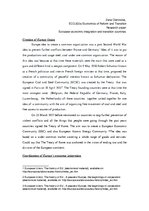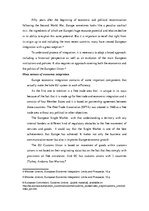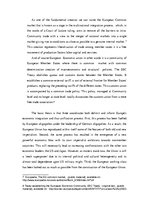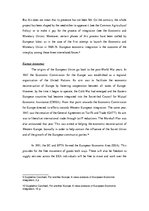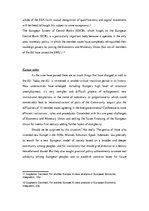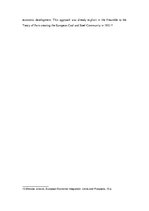-
European Economic Integration and Transition Countries
Research Papers4 Economics, International Organizations, History, Culture
2011 - 2015 years
In 1991, the EC and EFTA formed the European Economic Area (EEA). This provides for the free movement of goods both ways. There will also be freedom to supply services across the EEA individuals will be free to move and work over the whole of the EEA (with mutual recognition of qualifications) and capital movements will be freed (although this subject to some exceptions).
The European System of Central Banks (ESCB), which hinges on the European Central Bank (ECB), is a particularly important body because it operates in the only area, monetary policy, in which the member states have completely relinquished their sovereign powers by joining the Economic and Monetary Union (but not all members of the EU have joined the EMU )
Europe today
As the time have passed there are so much things that have changed as well as the EU. Today the EU is immersed in another critical transition period in its history. New uncertainties have emerged, including Europe's high level of structural unemployment, it's very complex and difficult process of enlargement, new institutional temptations in the name of subsidiary or proportionality which could conceivably lead to 'renationalization' of parts of the Community 'acquis' plus the difficulties of 15 member states agreeing in the Intergovernmental Conference to more efficient institutions , rules and procedures. Dovetailed with this are great challenges of Economic and Monetary Union and settling the future financing of the European Union for twenty-first century-adding further layers of complexity.
…
Europe-idea to create a common organization was a post Second World War idea to prevent further conflicts between France and Germany. Idea of it was to put the productions and usage steel, coal under one common organization. The reason of this idea was because at that time these materials were the main that were used as a guns and different kind a weapon component. On 9 May 1950 Robert Schuman known as a French politician and interim French foreign minister at that time, proposed the creation of a community of peaceful interests known as Schuman declaration.

